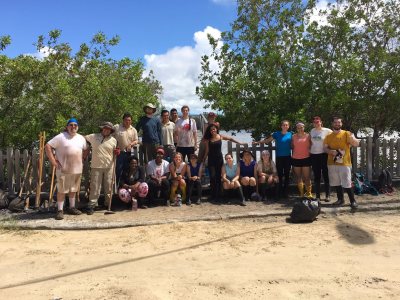Community Engaged Learning 3.0: Preserving Isabela Marshes for Future Generations
Written by: Britiny, class of 2019, Biology major
Poem from an environmentalist perspective highlighting the importance of containing the problem of Paspalum vaginatum (an invasive grass also called kikuyo), on the ecosystem of Isabela, one of the enchanted islands of the Galapagos Archipelago.
By: Brit
What does it mean to be invasive…Unwanted? Problematic?
Festering like a cancer, malignant and tragic
Sucking the life out of the native land and all its dependents
Invasive species are like bullies that get away with torturing innocents,
Imagine never being able to see flamingos in the Galapagos because kikuyo destroyed the marsh
Never seeing their lush vibrant pink plumage because new conditions are too harsh
Or never getting to see the stilts gracefully roaming the waters in search of prey
These native species are endangered in the Archipelago this month of May
Introduced for livestock, by ranchers who may have been naïve
Ignorant of potential destruction of habitats…that’s hard to believe
Kikuyo dries out the wetlands, drinking up the brackish water
Pushing out the endemics, no room for a barter
Wetlands are nesting areas for various wildlife, they also protect the shore
They’re important for the birds, filtering water and more
Conservation is tough because herbicides and pesticides are bad
But us Batesies got to help slow the spread of kikuyo, which I think is totally rad!!!
It will grow back eventually, so pointless to some is how it may seem
But only that area is sacrificed, it’s like ‘taking one for the team’
I’m happy to help, though the work was tough
It’s gratifying to try to protect, but will it ever be enough?
I hope that our efforts weren’t in vein
Because our project is over now, only two days left before returning to Maine!!!
